Jim Corbett National Park, India’s first national park established in 1936, offers one of the country’s most spectacular wildlife experiences with over 260-300 Bengal tigers and diverse ecosystems spanning 1,318 km². Understanding the best time to visit Corbett National Park becomes crucial for maximizing wildlife sightings, comfortable weather conditions, and access to premier safari zones. Poor timing can result in closed zones, extreme weather conditions, and limited wildlife visibility that diminishes this legendary conservation area’s magic.
The park’s location in Uttarakhand’s Himalayan foothills creates distinct seasonal patterns affecting wildlife behavior, zone accessibility, and visitor comfort. Strategic timing ensures you experience Corbett’s pristine wilderness during optimal conditions while accessing the best safari zone in Corbett for unforgettable tiger encounters and diverse wildlife photography opportunities.
Table of Contents
Quick Reference Guide: Optimal Corbett Visit Times
| Category | Optimal Choice | Wildlife Activity | Zone Access | Best For |
|---|---|---|---|---|
| Best Season | November-February | High | All zones open | First-time visitors |
| Peak Wildlife | December-February | Very High | Full access | Tiger enthusiasts |
| Best Weather | October-March | Moderate-High | Most zones | Photography lovers |
| Budget Season | July-September | Low-Moderate | Limited zones | Budget travelers |
| Avoid Completely | June | Very Low | Limited access | All visitors |
Understanding these patterns helps you navigate Corbett’s wilderness while maximizing both wildlife encounters and comfortable exploration during your visit.
Corbett National Park Season Guide
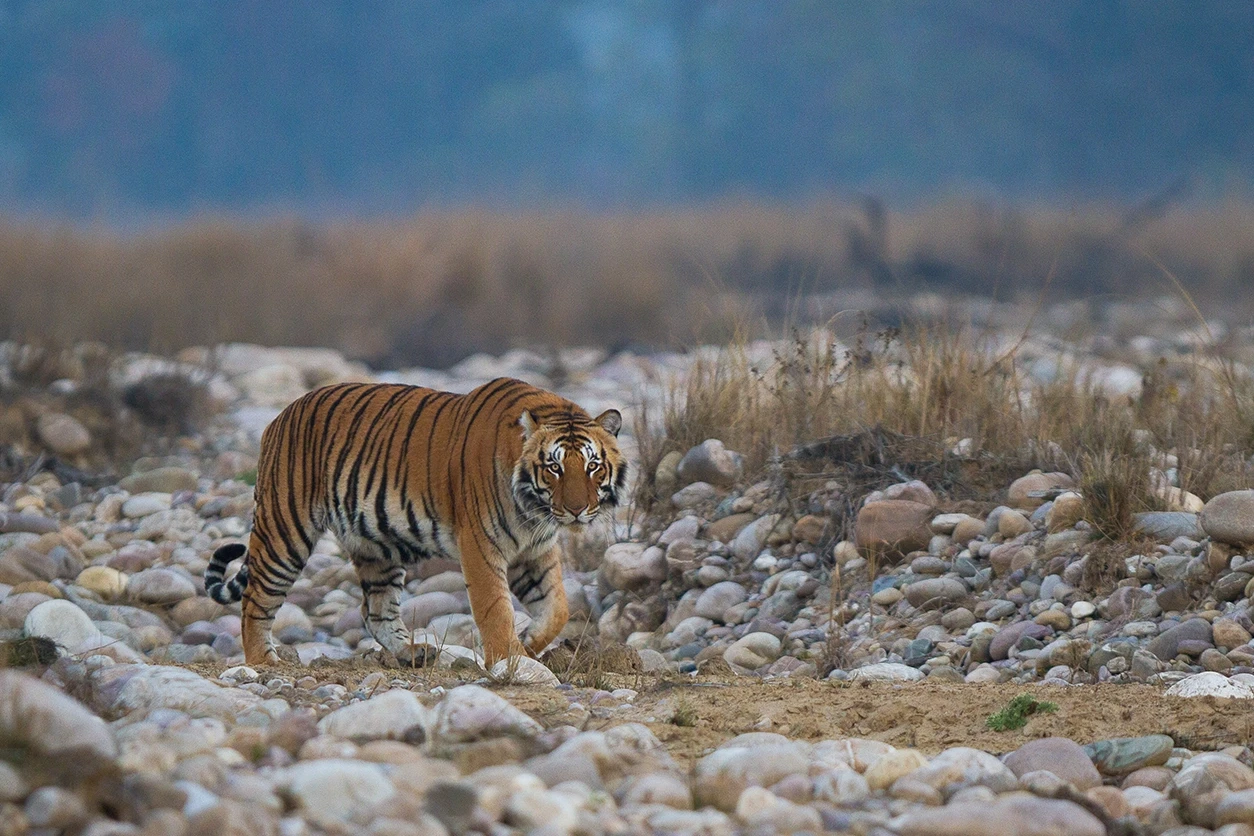
Seasonal selection dramatically impacts your Corbett experience, affecting climate of Jim Corbett National Park, wildlife visibility, and zone accessibility throughout the year.
1. November-February: Prime Wildlife Season
November-February represents the best time to visit Corbett National Park for optimal wildlife experiences and comfortable exploration conditions.
November-December: Perfect Balance Period
November-December offers ideal temperatures ranging from 5°C to 25°C, creating perfect conditions for extended safari activities. The cool, dry weather brings animals to water sources, dramatically increasing wildlife visibility across all zones. Clear skies and minimal vegetation provide exceptional photography opportunities, while comfortable walking conditions make this period ideal for nature walks and bird watching. All five safari zones remain fully operational during these months, offering maximum flexibility for wildlife exploration.
Key advantages during this period include:
- Excellent wildlife visibility as animals frequent water sources
- Comfortable temperatures for extended outdoor activities
- Crystal clear mountain views and optimal photography conditions
January-February: Peak Tiger Spotting
January-February brings the coolest period with temperatures ranging from 2°C to 22°C, requiring warm clothing for early morning safaris. These months feature the highest wildlife activity levels, with tigers and other predators most active during comfortable daytime hours. The dry conditions and sparse vegetation create ideal spotting opportunities, making this the premier period for serious wildlife enthusiasts and professional photographers.
2. March-May: Hot Season Challenges
March-May presents increasing temperatures but offers unique wildlife viewing opportunities for heat-tolerant visitors.
March-April: Transition Period
March-April experiences warming temperatures ranging from 10°C to 30°C, marking the beginning of summer heat. Wildlife remains moderately active during early morning and late evening hours, though midday sightings become less frequent. These months offer good photography opportunities with blooming forest flowers and active bird life, while crowd levels remain manageable before peak summer arrives.
May: Extreme Heat Period
May brings intense heat with temperatures reaching 35°C to 45°C, creating challenging conditions for both wildlife and visitors. However, this period offers significantly reduced crowd levels and immediate safari booking availability. Animals concentrate around remaining water sources, potentially providing excellent concentrated viewing opportunities for dedicated wildlife enthusiasts willing to endure heat challenges.
3. June-October: Monsoon and Recovery
The monsoon and post-monsoon period brings unique challenges and opportunities with limited zone access but dramatic landscape transformations.
June: Pre-Monsoon Closure
June marks the beginning of zone closures with extreme heat and preparation for monsoon season. Most zones close for maintenance, making this the least favorable period for park visits. Only limited zones may remain accessible with restricted wildlife activity due to heat stress.
July-September: Monsoon Season
Jim Corbett opening months during monsoon season include limited access to Jhirna and Dhela zones only. July-September brings cooler temperatures ranging from 20°C to 32°C due to frequent rainfall, creating lush green landscapes and dramatic sky photography opportunities. However, heavy rains can cause accessibility challenges and muddy safari routes.
Monsoon advantages include:
- Dramatically reduced crowd levels for intimate wildlife experiences
- Lush green forests providing stunning landscape photography
- Lower accommodation and safari costs throughout the region
October: Post-Monsoon Recovery
October marks the gradual reopening of all zones with temperatures ranging from 15°C to 28°C. The post-monsoon period offers fresh, clean air and rejuvenated forests, though wildlife activity remains moderate as animals adjust to changing conditions. This transitional month provides good value with fewer crowds than peak season.
For travelers combining Corbett with other regional experiences, Rajasthan tour packages offer expertly planned itineraries including national parks with cultural heritage sites.
Best Safari Zone in Corbett for Wildlife Encounters
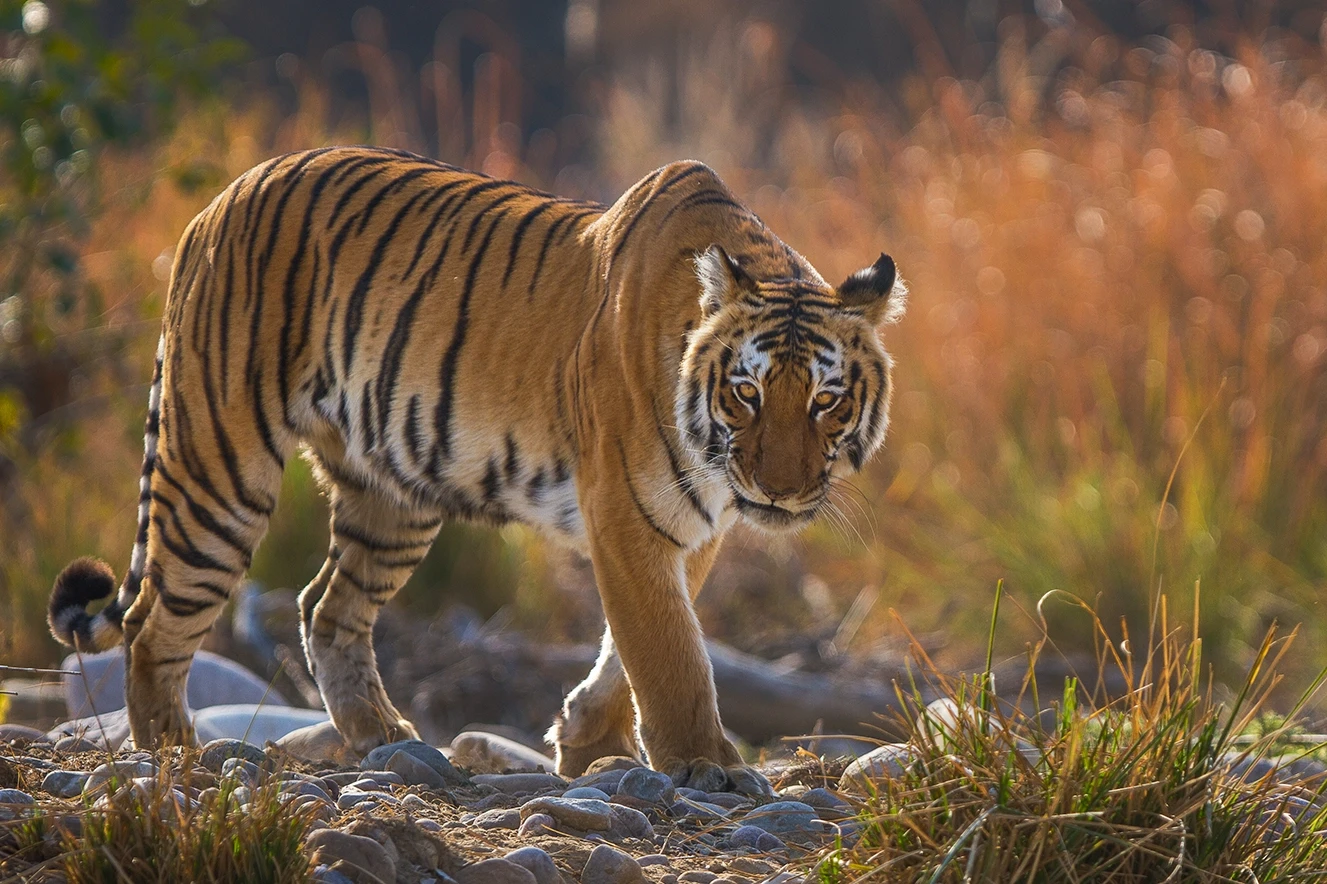
Understanding the best safari zone in Corbett helps maximize wildlife sightings based on your interests and seasonal preferences. Each zone offers unique ecosystems and wildlife specializations.
Zone-wise Wildlife Specialization
Each safari zone in Corbett offers unique ecosystems and wildlife viewing opportunities, requiring strategic selection based on your interests and seasonal timing preferences.
1. Dhikala Zone: Premier Tiger Territory
Dhikala zone represents the best safari zone in Corbett for tiger sightings, offering the highest probability of Bengal tiger encounters. This core area features diverse habitats including grasslands, dense forests, and the Ramganga River, creating ideal conditions for large mammals. Access requires overnight stays in forest rest houses with exclusive canter safari transportation for groups up to 16 people.
Wildlife highlights include:
- Highest tiger density with regular sighting opportunities
- Large elephant herds frequenting riverine areas
- Diverse bird species including fish eagles and kingfishers
2. Bijrani Zone: Balanced Wildlife Experience
Bijrani zone offers excellent wildlife diversity with comfortable day safari access, making it ideal for first-time visitors. The zone features mixed forests and grasslands supporting varied wildlife populations including tigers, elephants, and numerous deer species. Easy accessibility and well-maintained safari routes provide reliable wildlife viewing opportunities.
3. Jhirna Zone: Year-Round Access
Jhirna zone remains operational throughout the year, including monsoon season, offering consistent wildlife viewing opportunities. The dry terrain and scattered water sources create excellent spotting conditions for herbivores and their predators. This zone proves particularly valuable during monsoon months when other zones remain closed.
4. Durga Devi Zone: Riverside Wildlife
Durga Devi zone specializes in riverine ecosystem wildlife including elephants, tigers, and exceptional bird diversity. The zone’s proximity to the Ramganga River creates unique viewing opportunities for aquatic birds, gharials, and mahseer fish. Elephant sightings remain consistently high throughout the operational season.
5. Dhela Zone: Modern Safari Facilities
Dhela zone offers recently developed safari infrastructure with both day safaris and overnight accommodation options. The zone provides good tiger sighting opportunities while maintaining modern facilities and comfortable access routes for visitors seeking convenience.
For travelers exploring multiple wildlife destinations, Udaipur tour packages offer diverse cultural and wildlife exploration opportunities.
Jim Corbett Timings and Safari Schedule
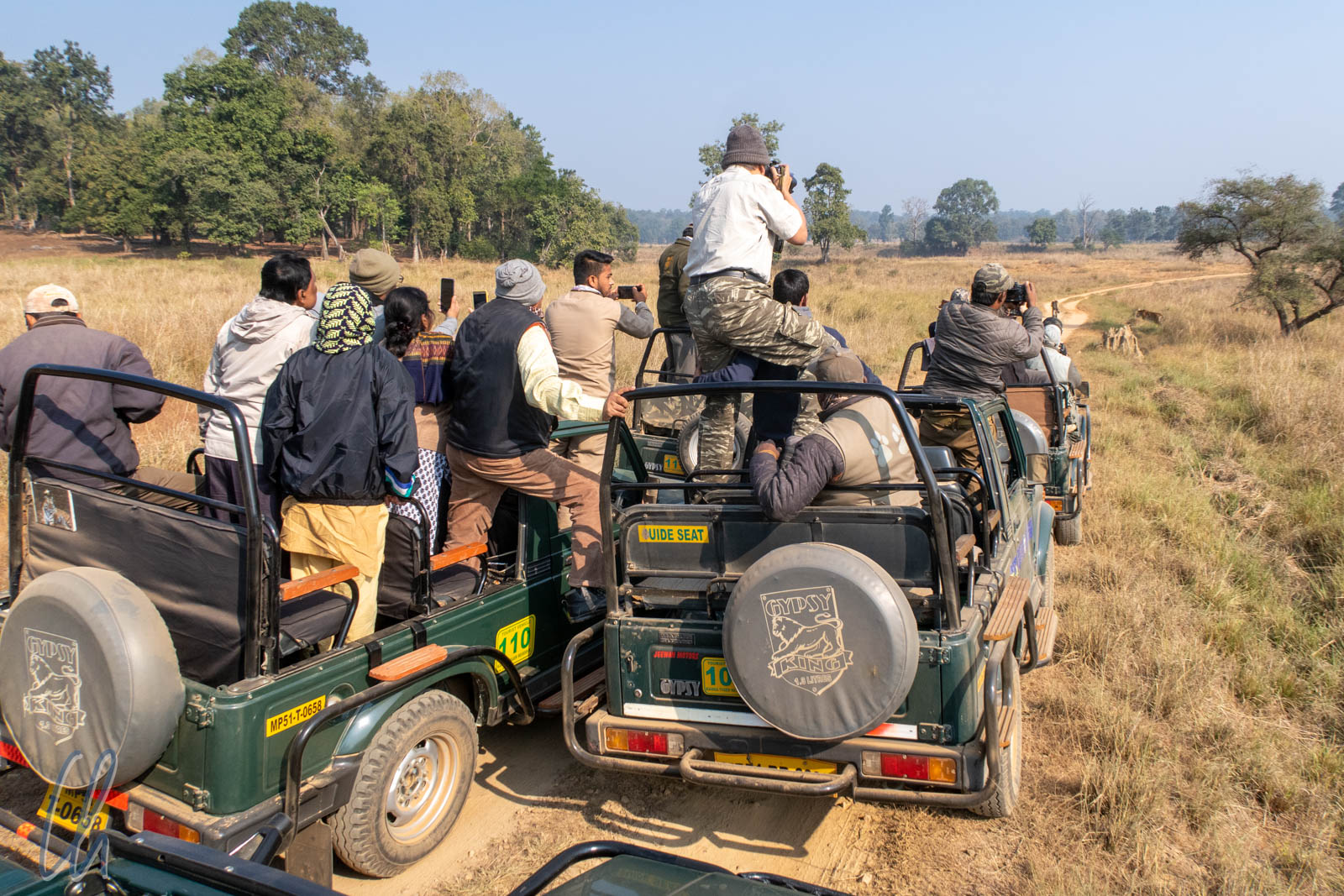
Understanding Jim Corbett timings ensures optimal safari booking and wildlife viewing opportunities throughout different seasons.
Daily Safari Timings
Strategic planning around official operating schedules maximizes wildlife encounter opportunities while ensuring comfortable visit experiences.
Morning Safari Schedule
Morning safaris operate from sunrise (approximately 6:00 AM varying by season) to 10:00 AM across all operational zones. Early morning timing coincides with peak wildlife activity periods when animals remain active before daytime heat. Morning safaris offer the highest probability of tiger sightings and diverse wildlife encounters.
Morning safari advantages include:
- Peak wildlife activity during cool morning hours
- Excellent photography lighting conditions
- Higher probability of predator sightings
Evening Safari Schedule
Evening safaris run from 2:30 PM to sunset (approximately 6:00 PM varying by season), providing afternoon wildlife viewing opportunities. Evening timing captures animals emerging from midday rest periods, though activity levels typically remain lower than morning sessions. Evening safaris offer beautiful sunset photography opportunities and different wildlife behavior patterns.
Seasonal Timing Variations
Safari timings adjust throughout the year based on seasonal weather conditions and wildlife activity patterns to ensure optimal visitor experiences.
Winter Timings (November-February)
Winter Jim Corbett timings feature extended safari hours due to comfortable temperatures throughout the day. Morning safaris begin at 6:30 AM while evening safaris extend until 5:30 PM, maximizing wildlife viewing opportunities during peak season.
Summer Timings (March-May)
Summer timings adjust for extreme heat with earlier morning starts at 6:00 AM and later evening departures at 3:00 PM. These adjusted schedules help avoid midday heat stress for both wildlife and visitors while maintaining safe exploration conditions.
Advance Booking Requirements
Safari bookings require advance reservations through official portals Corbett Government Process or Jim Corbett Official Website to secure preferred zones and timing slots. Peak season bookings fill rapidly, requiring reservations weeks in advance for popular zones like Dhikala.
Booking considerations include:
- Limited vehicles per zone based on carrying capacity
- Separate permits required for each safari zone
- Photography equipment restrictions in certain zones
How to Visit Corbett National Park
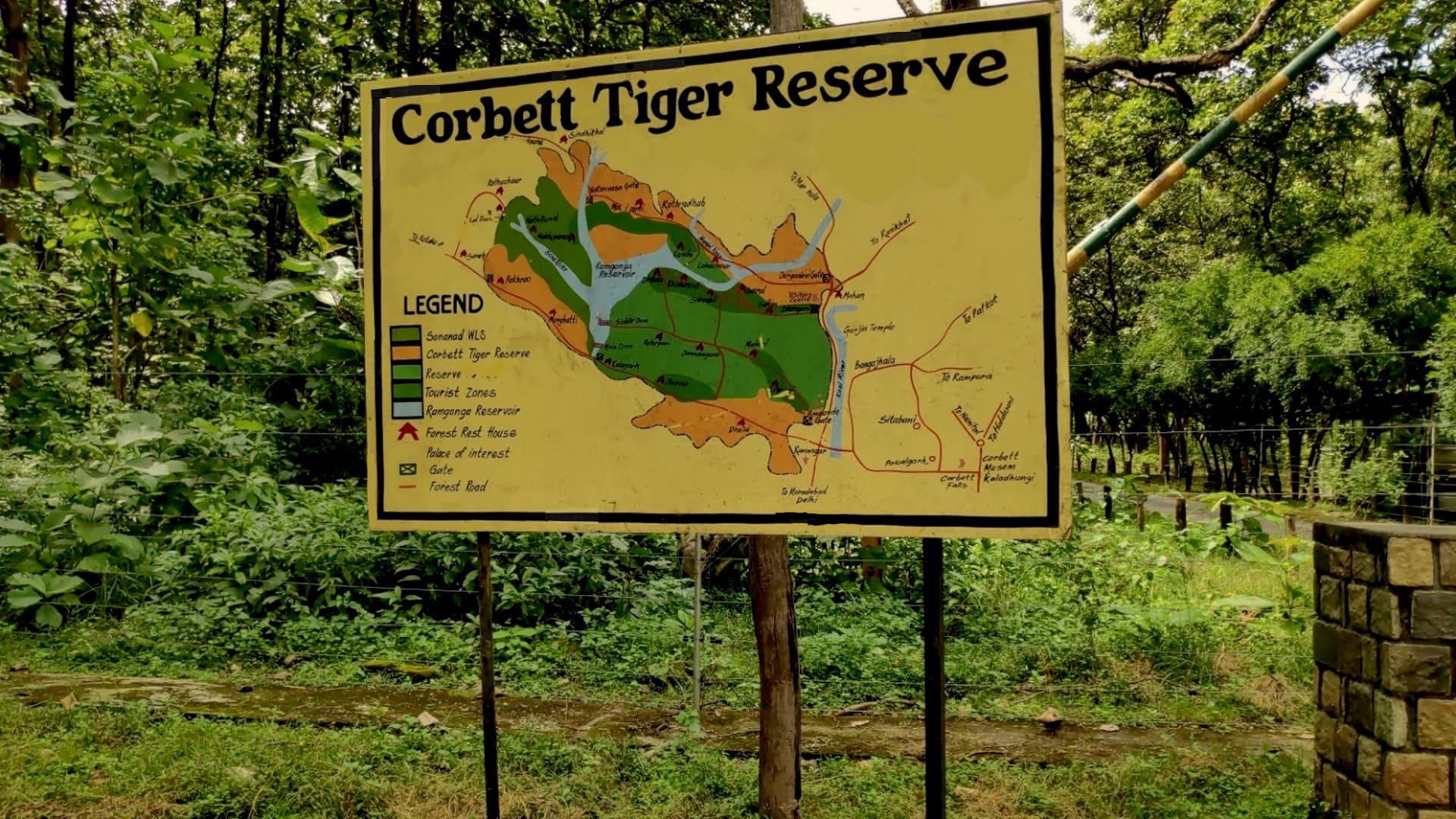
Understanding how to visit Corbett National Park involves strategic planning for transportation, accommodation, and safari arrangements to maximize your wildlife experience.
Transportation Options
Comprehensive transportation planning ensures smooth access to this wilderness destination from major Indian cities.
1. Road Access Routes
Road access provides the most flexible option for reaching Corbett, with well-maintained highways connecting major cities. From Delhi, the 250 km journey via NH-9 through Hapur-Moradabad route takes approximately 5-6 hours, offering scenic mountain views during the final approach. From Lucknow, the 400 km route provides alternative access for eastern region visitors.
Road travel advantages include:
- Flexible departure timing and route selection
- Cost-effective option for group travelers
- Scenic Himalayan foothill views during approach
2. Rail Connectivity
Ramnagar railway station serves as the primary rail access point, located just 12 km from park entrance gates. Direct trains from Delhi including the Ranikhet Express provide comfortable overnight journey options, while daytime trains offer scenic mountain railway experiences. From Ramnagar station, local transportation easily connects to various park zones and accommodation options.
3. Air Travel Options
Pantnagar Airport, located 65 km from Corbett, provides the nearest domestic flight connectivity with regular services from Delhi and other major cities. International travelers can fly to Delhi’s Indira Gandhi International Airport (300 km away) followed by road transfer to the park. Air travel reduces journey time significantly, though requires advance booking for domestic connections.
Accommodation Planning
Strategic accommodation selection impacts safari access timing and overall park experience quality throughout your stay.
1. Forest Rest Houses
Government forest rest houses including Dhikala, Bijrani, Jhirna, and Gairal provide authentic wilderness accommodation experiences within park boundaries. These facilities offer basic amenities with vegetarian meal services, though advance booking remains essential due to limited availability. Forest rest houses provide immediate safari zone access and authentic jungle atmosphere experiences.
2. Resort and Hotel Options
Ramnagar town features over 100 accommodation options ranging from budget lodges to luxury wildlife resorts, offering varied amenities and price points. Resort stays provide comfortable facilities while maintaining convenient park access for daily safari activities. Many resorts offer package deals including safari bookings and meal arrangements.
For mountain retreat experiences, Kashmir tour packages provide serene Himalayan alternatives to wildlife destinations.
Essential Documentation and Permits
Proper documentation and permit arrangements ensure smooth park entry and safari access while complying with conservation regulations.
1. Required Permits and Identification
All park visitors require valid photo identification and separate safari permits for each zone visit. Indian citizens need government-issued photo ID while foreign visitors require passport documentation. Safari permits specify exact dates, zones, and timing slots that cannot be modified without advance rebooking.
2. Photography Equipment Guidelines
Professional photography equipment requires additional permits and fees, while drone usage remains strictly prohibited throughout park areas. Mobile phones and basic cameras are permitted for personal use, though flash photography is restricted in certain wildlife zones.
Climate of Jim Corbett National Park
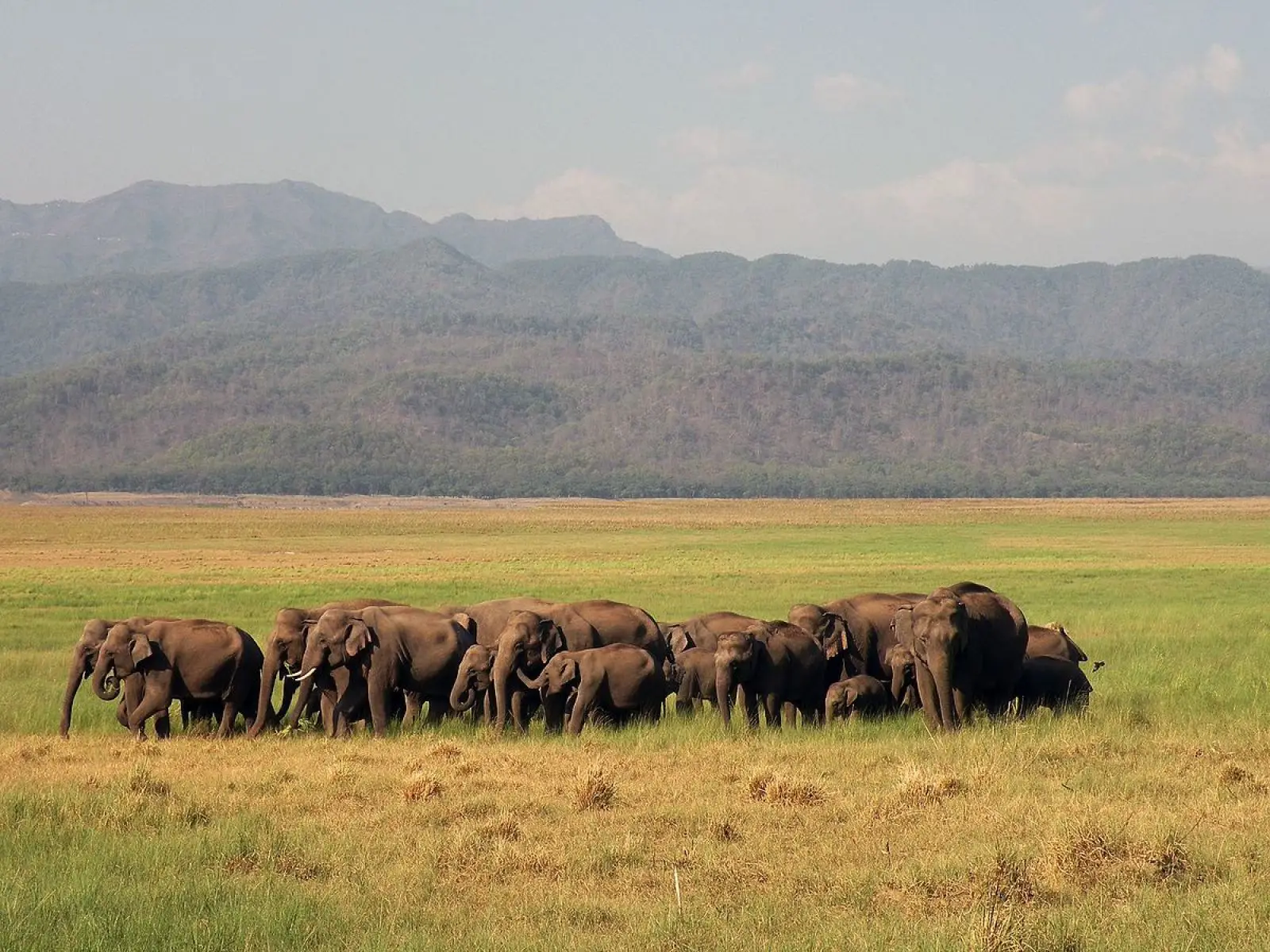
Understanding climate of Jim Corbett National Park helps plan appropriate clothing, equipment, and activity scheduling throughout different seasons.
Seasonal Weather Overview
Winter climate (November-February) features cool, dry conditions with temperatures ranging from 2°C to 25°C, providing ideal conditions for extended outdoor activities and wildlife photography. Summer climate (March-May) brings increasing heat and humidity with temperatures rising to 45°C during peak periods, while early morning and late evening remain comfortable for safari activities. Monsoon climate (July-September) features heavy rainfall, high humidity, and temperatures moderated by cloud cover ranging from 20°C to 32°C, creating lush landscapes though accessibility challenges.
Essential Clothing Recommendations
Winter visits require layered clothing with warm jackets for early morning safaris, comfortable walking shoes with good grip, and sun protection for afternoon activities. Summer visits need light-colored, breathable cotton clothing for heat protection, wide-brimmed hats, high SPF sunscreen, and closed shoes suitable for hot ground surfaces. All seasons benefit from appropriate rain gear and comfortable safari-suitable footwear.
Advanced Safari Strategies
Strategic safari planning and wildlife observation techniques help maximize encounters through optimal zone selection and timing approaches.
Zone Selection by Season
Strategic zone selection based on seasonal conditions maximizes wildlife encounters while considering accessibility and comfort factors throughout the year.
1. Peak Season Zone Strategy
During peak season (November-February), Dhikala zone offers the highest tiger sighting probability though requires advance booking and overnight stays. Bijrani zone provides excellent day safari alternatives with reliable wildlife viewing, while Jhirna zone offers consistent year-round access with good herbivore populations.
2. Off-Season Opportunities
Monsoon season safari opportunities in Jhirna and Dhela zones provide unique experiences with lush landscapes and reduced crowd levels. Post-monsoon October visits offer fresh forest conditions though wildlife activity remains moderate as ecosystems recover from seasonal changes.
Optimal Photography and Wildlife Observation
Golden hour photography during sunrise (6:00-8:00 AM) and sunset (4:00-6:00 PM) provides dramatic lighting for wildlife and landscape shots. Winter months offer clearest atmospheric conditions with minimal haze, while post-monsoon periods provide lush green backgrounds for wildlife photography. Understanding seasonal wildlife behavior enhances sighting opportunities, with winter featuring peak activity and summer concentrating wildlife around water sources.
For comprehensive India wildlife experiences, India tour packages offer expertly coordinated multi-park itineraries with optimal timing coordination.
Conclusion
The best time to visit Corbett National Park requires strategic combination of seasonal weather preferences, wildlife activity patterns, and zone accessibility considerations. Winter months from November through February provide optimal conditions for wildlife encounters, comfortable exploration, and access to all safari zones. Understanding Jim Corbett timings and Jim Corbett opening months helps plan efficient visits that maximize tiger sightings and diverse wildlife experiences. The best safari zone in Corbett varies by season and wildlife interests, with Dhikala offering premier tiger experiences while Jhirna provides year-round accessibility. Essential planning includes advance permit booking through official channels, appropriate seasonal clothing, and flexible safari scheduling based on climate of Jim Corbett National Park conditions.
You can visit us at VDP Travels, Neighbourhood Complex, F- 5, near SBI Bank, Sector 4, Nerul, Navi Mumbai, Mumbai, Maharashtra 400706. For comprehensive Jim Corbett safari packages with expert wildlife guides, optimal timing coordination, and seamless Uttarakhand exploration experiences, call +91 99675 18405, or visit VDP Travels.
Best Time to Visit Corbett National Park – FAQs
What is the best time to visit Corbett National Park?
November through February offers the best weather conditions, highest wildlife activity, and access to all safari zones. Winter months provide comfortable temperatures (5°C-25°C) and excellent tiger sighting opportunities.
Which is the best safari zone in Corbett?
Dhikala zone offers the highest tiger sighting probability and diverse wildlife experiences, though requires overnight stays. Bijrani zone provides excellent day safari access with reliable wildlife viewing for first-time visitors.
What are Jim Corbett timings for safaris?
Morning safaris operate from 6:00-10:00 AM while evening safaris run from 2:30 PM-6:00 PM. Timings vary slightly by season, with winter offering extended hours due to comfortable temperatures.
Which are Jim Corbett opening months?
Most zones open October-June, while Jhirna and Dhela zones remain accessible year-round including monsoon season. Dhikala zone typically operates November-June for optimal wildlife experiences.
How to visit Corbett National Park?
Access via road (250 km from Delhi), rail (Ramnagar station), or air (Pantnagar airport 65 km away). Advance safari permits required through official booking portals with valid photo identification.
What is the climate of Jim Corbett National Park?
Sub-tropical climate with cool, dry winters (2°C-25°C), hot summers (15°C-45°C), and monsoon season (20°C-32°C) with heavy rainfall. Winter offers ideal weather for wildlife activities.
What is the Corbett National Park season schedule?
Peak season: November-February (all zones open), Summer: March-June (most zones open), Monsoon: July-September (limited zones). October marks post-monsoon recovery period.
Can I visit Corbett during monsoon season?
Yes, Jhirna and Dhela zones remain open during monsoon season (July-September) offering lush landscapes and reduced crowds, though accessibility may be challenging during heavy rains.
Which zone is open year-round in Corbett?
Book 2-4 weeks in advance for peak season (November-February) as popular zones like Dhikala fill rapidly. Off-season bookings can be made with shorter notice through official portals.





